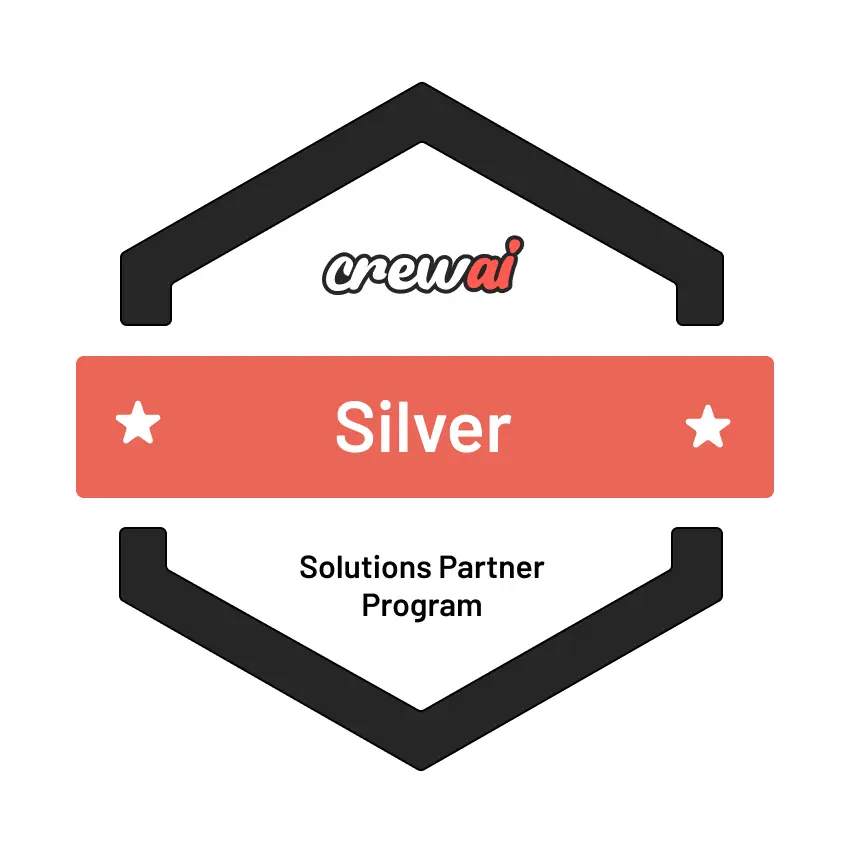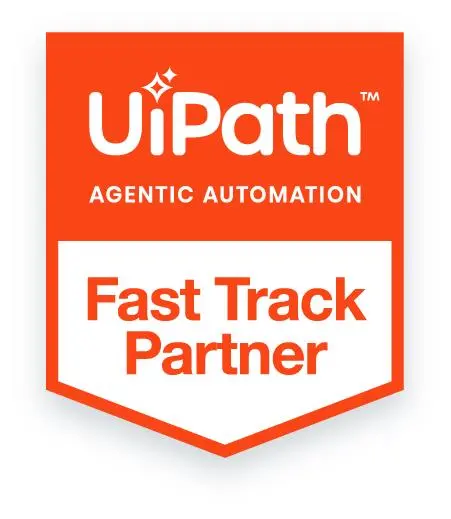
Key Takeaways
- Traditional automation could only mimic clicks; combining OpenAI’s interpretive power with UiPath’s structure finally brings cognitive understanding to authorization workflows.
- Early deployments show a 60% drop in manual work and 24% faster approvals, with an 89% first-pass success rate, proving the model’s real-world impact.
- The goal isn’t to replace healthcare staff but to remove the repetitive, manual bottlenecks—freeing teams to focus on exceptions and patient care coordination.
- Using HIPAA-compliant instances of Azure OpenAI and UiPath’s audit-ready controls ensures patient data stays protected while automation scales safely.
- The biggest benefit isn’t just efficiency—it’s predictability. When approvals become reliable, scheduling, patient satisfaction, and cash flow all improve in tandem.
When you visit a hospital’s revenue cycle department, you’ll see the same quiet chaos. Stacks of prior authorization forms, payer portals open on too many screens, and staff juggling half a dozen policy PDFs just to get a single procedure approved. It’s a ritual that feels both absurd and unavoidable—the paperwork bottleneck that slows everything else down.
Prior authorization isn’t glamorous. It’s not clinical, and it’s not visible, yet it dictates how fast care moves and when hospitals get paid. The average turnaround for approvals still hovers around two weeks in many systems. Patients wait, physicians fume, and administrators scramble to keep up with shifting payer requirements.
For years, automation was the supposed cure. But most attempts—rule-based RPA scripts and hard-coded workflows—ran out of steam fast. The problem wasn’t a lack of effort; it was a lack of understanding. Traditional bots could click through forms but not interpret what they were seeing. They didn’t understand that a “progress note” might satisfy a “clinical summary” field or that a payer’s new policy revision invalidated last month’s submission template.
That’s where combining OpenAI’s reasoning capabilities with UiPath’s automation backbone changes the story. It’s not about replacing people with bots—it’s about fusing interpretation with execution.
Also read: Why Is UiPath Integration with Chatbots and Virtual Assistants Non-Negotiable?
The Authorization Headache
Before you appreciate what this hybrid setup does, it’s worth unpacking why prior authorizations are so stubbornly manual. Every authorization passes through a few predictable checkpoints—eligibility, documentation, submission, and follow-up—but each payer adds its own quirks. One might demand a specific diagnosis code pairing. Another might want a treatment justification written in a certain format. Many still rely on web portals with inconsistent layouts and zero APIs.
Here’s what a typical day looks like for a coordinator handling these:
- Download PDFs or scanned documents from the EMR.
- Read the physician’s notes to extract the reason for the procedure.
- Check payer policies (often buried in PDFs with hundreds of clauses).
- Fill out web forms and attach required documentation.
- Wait, check status, and follow up by phone or email.
Multiply this across thousands of cases per month, and you get why revenue cycle teams spend an absurd percentage of their time on “paperwork.” It’s not a lack of technology—EMRs, CRMs, and claim systems exist—it’s the gray zone between them that kills productivity.
The Missing Piece: Understanding
Traditional RPA tools were built for structure. They love tables, rules, and fixed layouts. But healthcare data is messy. Physician notes are narrative; payer requirements evolve; PDFs come in every imaginable format.
This is where OpenAI’s language models prove invaluable. They can read text, infer meaning, and rephrase context—tasks that used to be purely human. In practical terms:
- They can summarize a physician’s note into a justification that meets payer policy language.
- They can read a policy document and pull out what’s actually relevant (e.g., “MRI requires prior authorization only for outpatient cases”).
- They can compare current submission content with last month’s policy to flag mismatches before rejections happen.
- And, crucially, they can recognize variations in terminology—the difference between “clinical rationale” and “medical necessity” is semantic, not structural.
This isn’t magic; it’s pattern recognition and reasoning applied at scale. The AI doesn’t just parse words—it interprets their purpose. That’s what RPA alone never managed to do.
UiPath: The Muscle Behind the Mind
If OpenAI brings the cognitive layer, UiPath brings discipline. Healthcare automation lives or dies on governance, traceability, and compliance. You can’t just unleash an AI model on PHI and hope for the best. UiPath provides the control surface—the structured environment where these intelligent tasks happen safely.
In a typical setup:
- Data Ingestion: UiPath bots pull relevant patient, provider, and procedure data from EMRs like Epic or Cerner.
- Document Understanding: OpenAI models extract and interpret unstructured text—clinical notes, discharge summaries, and referral forms.
- Validation: Bots verify key fields (coverage, eligibility, NPI, and CPT codes) against internal master data.
- Form Submission: UiPath automates portal interactions or API calls to payers.
- Response Interpretation: The model reads the payer’s response—even free-text denials—and classifies outcomes.
The result is a workflow that learns and adapts. When payer websites change layouts, UiPath’s automation layer adjusts quickly. When policy documents update, the LLM reinterprets them without weeks of reprogramming.
You can think of it like a clinical team: UiPath is the disciplined nurse who never misses a step, and OpenAI is the sharp resident who understands why those steps matter.
A Real Deployment Story
One mid-sized hospital group ran a pilot with this combination earlier this year. They handle around 18,000 authorizations per month across orthopedics, radiology, and cardiology. Before automation, the average handling time per case was about 14 minutes.
The new setup looked like this:
- UiPath handled data gathering and form submission.
- OpenAI summarized clinical notes and aligned them with payer-specific templates.
- The system flagged ambiguous or incomplete justifications for human review.
The results after 90 days were hard to ignore:
- 60% drop in manual processing effort.
- 24% faster average approval time.
- 89% first-pass approval rate (up from 74%).
- Staff were redeployed from clerical work to escalations and exception management.
The surprising part? Staff satisfaction improved. People stopped spending their days toggling between portals and started handling actual decisions again.
Why It Clicks
There’s a deeper reason this approach works. Prior authorization sits at the intersection of structured data and interpretive reasoning. RPA handles the structure; LLMs handle the reasoning.
You could argue that earlier “AI” attempts tried to force everything into one model—either rule engines pretending to understand language or NLP systems that couldn’t act on what they read. This dual-stack design finally respects the division of labor.
Still, it’s not foolproof. There are boundaries:
- Garbage in, garbage out. If EMR data is incomplete or mislabeled, no AI can fix it.
- Context blind spots. The model might miss subtle medical reasoning without historical records.
- Latency trade-offs. Real-time LLM calls can add a few seconds—negligible for most workflows, but not for batch jobs.
- Payer resistance. Some insurers actively discourage automation on their portals.
In other words, it works best as an augmentation layer, not a full replacement.
Integration Patterns Emerging
In the field, three main design patterns are showing up repeatedly:
- Inline Intelligence: OpenAI is called directly from UiPath workflows—perfect for smaller teams who want cognitive support inside existing bots.
- Centralized Cognitive Service: A standalone API layer processes all LLM tasks—summarization, validation, and reasoning—and sends structured output back to UiPath. Ideal for multi-department deployments.
- Agentic Orchestration: Early adopters are experimenting with multi-agent setups, where one AI “agent” plans the workflow, calls UiPath bots as executors, and another agent handles policy interpretation. It’s complex, but it’s the direction large hospital networks are headed.
Each pattern reflects a different maturity level. Some organizations just need faster form-filling; others are redesigning their entire authorization departments around cognitive automation.
Data Privacy and Trust
Healthcare doesn’t forgive mistakes when it comes to data. Every automation plan starts with the same conversation: Where does PHI go?
OpenAI integrations should always run through Azure OpenAI Service, which provides HIPAA-compliant, regionally isolated instances. UiPath adds its own safeguards—masking, tokenization, and audit trails.
A few hard-learned lessons from real projects:
- Never send full patient records to the LLM; send only de-identified context.
- Log all prompt-response pairs for auditing (and retraining if needed).
- Keep a manual override for cases involving sensitive conditions.
- Review model outputs regularly to ensure no hallucinated or fabricated data sneaks through.
If done correctly, this architecture can actually improve compliance. Every step gets logged, and every AI decision becomes traceable.
The Human Factor
There’s a misconception that automation depersonalizes healthcare operations. Ironically, the opposite happens when it’s done right.
Once clerical drudgery is lifted, staff can focus on complex cases or spend time educating clinicians about documentation requirements. Instead of burning out over missing attachments, they start preventing denials proactively.
Human review doesn’t vanish; it shifts. The AI might suggest that a note lacks sufficient medical necessity phrasing — a person still decides how to fix it. Over time, those human corrections become training data, making the system smarter.
You start to see a quiet cultural change: compliance teams stop being gatekeepers and start acting like process coaches.
What We’re Learning
A few insights from healthcare groups already running these automations:

- Good prompts beat good code. How you ask the model matters more than how you wire it. Clear, specific prompts yield consistent results.
- Don’t chase 100% automation. The sweet spot is 70–80% coverage; the rest should stay with humans for context and quality.
- Expect rules to move. Payer policies change quarterly; keep a retraining cadence.
- Quantify what you can’t see. Time saved is obvious, but reduced burnout and improved predictability are harder — and more valuable—metrics.
- Marry it with process mining. Understanding your existing bottlenecks before you automate makes all the difference.
A few early adopters even discovered they were duplicating work across teams—automation didn’t just make them faster, it forced them to rethink how work should flow.
Beyond Efficiency
It’s tempting to treat this as a cost play—fewer staff hours, faster cycles. But the real payoff is in dependability. When approvals become predictable, scheduling stabilizes. Patient experience improves because treatments aren’t delayed by invisible paperwork. Physicians stop having to “re-justify” decisions they have already made.
And maybe that’s the deeper lesson: automation isn’t about removing people; it’s about removing the chaos around them.
The OpenAI + UiPath model gives healthcare organizations something they’ve been chasing for decades—a way to combine structure with reasoning. It’s not perfect, but it’s progress that feels practical, not theoretical.
The industry’s next step won’t be building smarter bots; it’ll be building workflows that can think just enough to stay out of their own way.








